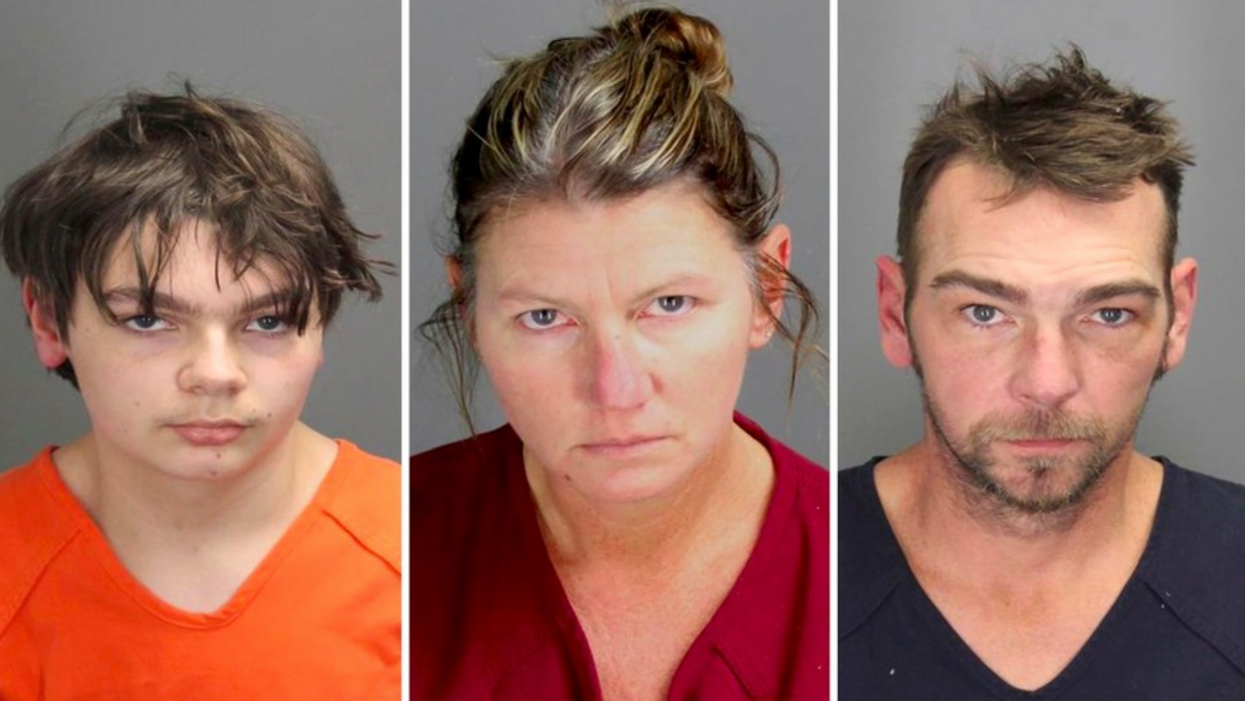Targeting The Socially Deviant Parents Of School Shooters
After the 2012 massacre at an elementary school in Newtown, Connecticut, then-Rep. Mike Rogers, a Michigan Republican, evaded calls for banning weapons of war. But he had other ideas. The "more realistic discussion," Rogers said, is "how do we target people with mental illness who use firearms?"
Tightening the gun laws would seem a lot easier and less intrusive than psychoanalyzing everyone with access to a weapon. But to address Rogers' point following the recent mass murder at a suburban Detroit high school, the question might be, "How do we with target the adults who hand powerful firearms to children with mental illness?"
The parents of Ethan Crumbley presented their clearly troubled 15-year-old with a high-powered weapon. He is charged with using the semiautomatic handgun to murder four students at Oxford High School.
This is hardly the first case of parents enabling a sick child to act on his violent fantasies. Nancy Lanza, the mother of the 20-year-old who killed 27 innocents at the Connecticut elementary school, left an unsecured Bushmaster .223-caliber rifle at her tidy house. Nancy was Adam Lanza's first victim.
Laurel Harper had previously placed her son Christopher in a psychiatric hospital, but that did not deter her from keeping unsecured guns at their home. Christopher brought six of them to his 2015 rampage at Umpqua Community College in Roseburg, Oregon. Nine students died.
Both Nancy Lanza and Laurel Harper were divorced women left to single-handedly deal with children tortured by inner demons. But rather than steer their sons away from the gun culture, they both dove into it.
Nancy would go to bars at night and brag about all the guns she kept at home. Laurel, a nurse, spent long hours on forums, her subjects alternating between her son's mental illness and her gun collection.
"I keep two full mags in my Glock case," Laurel swaggered online. "And the ARs & AKs (semiautomatics) all have loaded mags." She criticized "lame states" that put limits on loaded firearms in the home.
Concerning disregard for the lives of others, no one would beat James and Jennifer Crumbley. The school called them in after Ethan was found having drawn pictures of a gun, a bullet and bloody figure with the words "the thoughts won't stop" and "help me."
They came in but refused to take Ethan home. They wanted to get back to their jobs.
The day before, the school informed the parents that their son was found searching online for ammunition. Jennifer responded by sending an insanely supportive text to Ethan: "LOL, I'm not mad at you. You have to learn not to get caught."
When these details emerged, the parents took off to hide from getting caught. They now face four counts each of involuntary manslaughter.
The central focus of the Michigan horror has rightly moved from a mentally ill high schooler to his socially deviant parents. Which leads to these two questions:
Aren't parents who keep loaded weapons in a home shared by a disturbed child with violent obsessions themselves mentally twisted? And what could be done about them?
A woman had reportedly told investigators in Connecticut that she overheard Adam Lanza say he planned to kill his mother and children at the elementary school. She even called the local police. But since Nancy Lanza, not Adam, owned the weapons, the police couldn't take them away.
If police had removed arms from adults without criminal records, the gun rights fanatics would have exploded with outrage. How dare you go after these noble defenders of the Second Amendment?
Besides, it's easy to identify mentally ill people who use firearms, right? It's certainly easy once the massacre is over.
Follow Froma Harrop on Twitter @FromaHarrop. She can be reached at fharrop@gmail.com. To find out more about Froma Harrop and read features by other Creators writers and cartoonists, visit the Creators webpage at www.creators.com.




